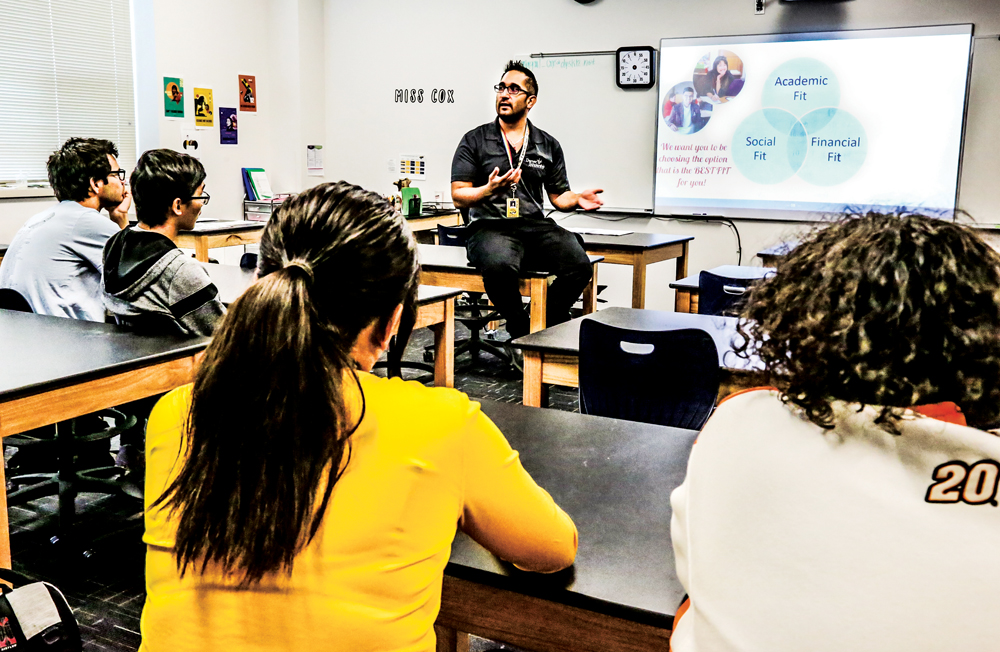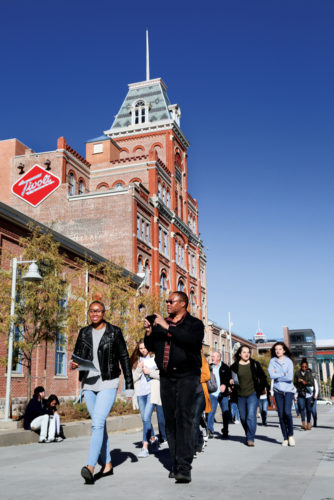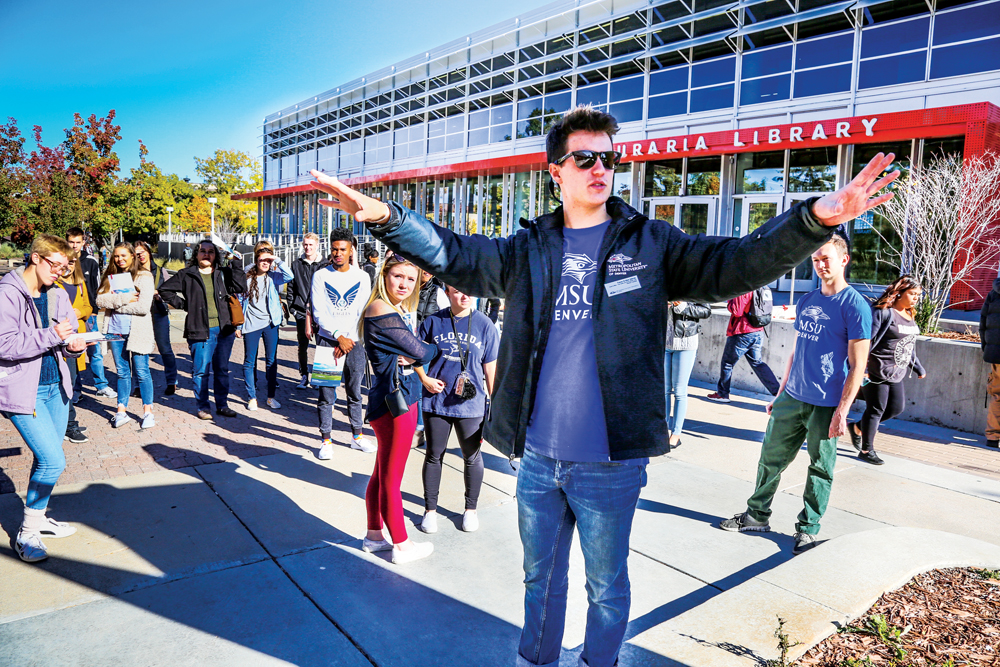
Zack Montez, NHS Future Center College Advisor, advises students to “be themselves” as they write their personal essays for college admission rather than attempt to answer prompts the way they think a college wants them to respond. No one wants to read a “cookie cutter” essay, he says.

College tour in Downtown Denver.
Now that we have readers’ attention, let’s reconsider that title. Applying for college is not easy. Nor should it be, one could argue. After all, any investment of tens of thousands of dollars (whether borrowed, saved, or awarded), reasonably requires a comparable investment in time, energy, and effort.
Perhaps the biggest hurdle for many students in applying to college is writing what is, in essence, the application’s heart and soul: the personal essay. Most U.S. colleges and universities rely on The Common Application and the less widely-used Coalition Application. Each includes a host of personal essay prompts to choose from. Students may use either or both applications, depending on which institution they hope to attend.
The exercise of writing the personal essay requires that applicants distill their lessons learned or hurdles overcome into no more than 550 or 650 (depending on the application) compelling, incisive, thoughtful, articulate, astute, and perhaps even somewhat soul-baring words. That is less than this article’s word count. Even without that list of adjectives.
So what is the secret to a great personal essay? First, resist the urge to write about a mission trip; admissions essay readers see a lot of those. Prospective students should share insights and experiences they’ve acquired as a result of a deeper commitment or ongoing engagement with an activity, say Dr. Jeff Ederer and Denise Kupetz, principals in College Route Map Educational Consulting. Examples from Ederer and Kupetz’s decades in higher education include a high school student who works a part-time job to help support their family or cares for an aging grandparent on weekends. These can carry as much weight and show personal growth just as a well-placed internship might.

Trevor Gritton-Adkins leads a Metropolitan State University tour of the campus following a half-hour orientation for the potential new students.
Another tip is be authentic. Authenticity in the personal essay is key, say Ederer and Kupetz. The instructions suggest as much, stating that beyond the ability to write “clearly and concisely,” the personal essay “helps you distinguish yourself in your own voice.” In other words, and at the risk of stating the obvious, do not have someone else write your personal essay. While a teacher or parent may help you refine an idea or review your essay for clarity, the words and ideas need to be your own or you will forsake the very authenticity that readers seek in your essay.
Zack Montez, who directs Northfield High School’s DSF [Denver Scholarship Foundation] Future Center, concurs, adding “It’s an opportunity for the student to express who they are to the admissions representative; it can be any component of that individual’s personality or lived experience.”
In part, the personal essay’s purpose is to help the college determine whether the student will be a good fit for the institution. Colleges and universities want a student body that is not only racially and ethnically diverse, but also diverse in perspectives, backgrounds, and majors, Ederer says. Readers are looking for essays that make them want to stop and share with other readers.
Montez says that more selective schools will typically require one or more supplemental essays in addition to the personal essay. The most common of these requires the student to reflect on what they know of the institution, to ensure that an individual has given thought to the type of institution and coursework they hope to pursue. Ederer and Kupetz share an example of an unusual supplemental essay prompt, from the University of Chicago, which they paraphrase as “Where’s Waldo and why does it matter?”
Before answering these and less existential questions, students can learn about colleges and universities by attending college fairs, meeting with campus representatives who visit high schools, taking college tours, and pursuing websites. Ederer encourages parents and guardians to build college tours into existing trips rather than wait until the summer before senior year, when applications loom.
Montez, who was a first-generation college student, appreciates that not everyone has the ability to take their student on campus visits or expose them to the college application process. He suggests that in addition to college fairs and meetings with representatives, some students can take advantage of the college tours that the Denver Scholarship Foundation (DSF) offers. DSF operates 14 Future Centers across DPS and sponsors two campus visits each fall: one to Colorado State University and the other to the University of Northern Colorado.
Whether one selects a technical or vocational school, a two-year or a four-year degree program, an in-state or out-of-state undergraduate experience, the decision on where to apply to college is not one-sided. All of these advisors emphasize that selecting a college is not just about getting in but also about making sure that the schools one applies to are a good fit for the individual student. Kupetz stresses “the idea that someone is not just getting there but that you can thrive and do well when they get there as well.”



0 Comments